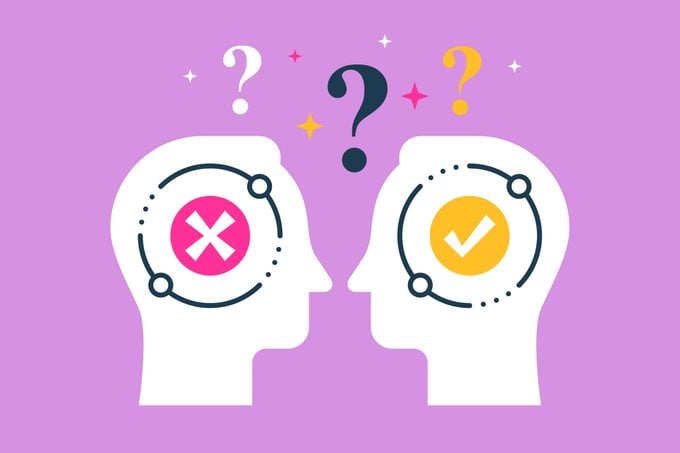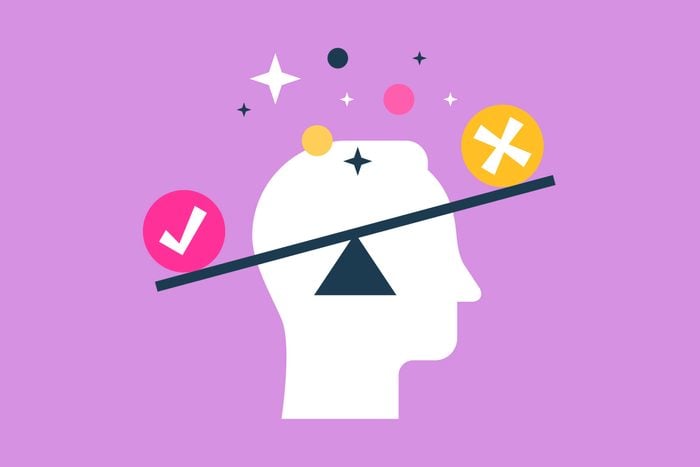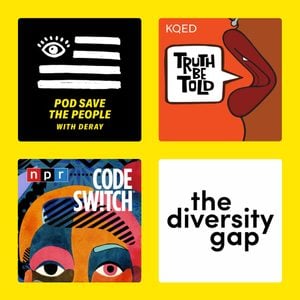What Is Implicit Bias? How to Recognize and Change Our Unconscious Stereotypes and Assumptions
Updated: Nov. 28, 2022
Experts say we all have some bias, but there are ways to fight against it.
Our editors and experts handpick every product we feature. We may earn a commission from your purchases.
Implicit bias is a term that’s being used with increasing frequency, and you may nod your head when you hear it but not fully understand it. So, what is implicit bias, exactly? Psychologists define it as the prejudice and stereotypes that we unconsciously hold against others, and it’s something that can run contrary to our conscious beliefs. The result can infiltrate every level of society, leaving disparities and unfair policies and procedures in its wake—from institutional racism and structural racism that leads to shocking gaps in health care, housing, and education, and on a smaller scale, unpleasant microaggressions, like being told, “You’re really pretty…for a Black girl,” and these other examples.
If you think you have no implicit bias, well, to quote Ice Cube, you better check yourself before you wreck yourself. No matter what we do or don’t do, ideas that profoundly and subliminally influence our views of others are regularly deposited into our mental bank accounts. And it’s not only about race. Its ugliness leaves no stone unturned—there are oodles of bias to be found in our perceptions of gender, age, body type, and more.
Everyone has some degree of implicit bias. How it began within us is no fault of ours, either, says Beverly Daniel Tatum, PhD, an expert on the psychology of racism and the author of Why Are All the Black Kids Sitting Together in the Cafeteria? And Other Conversations About Race. “Starting from birth, we are exposed to information about other people—observing interactions, hearing adult comments, watching television, and reading books,” explains Tatum. “If we live in an environment in which we are bombarded with stereotypical images in the media, are frequently exposed to ethnic jokes, and are rarely informed of the accomplishments of marginalized groups, we are likely to develop negative categorizations of those groups that form the basis of prejudice or bias.” Cultural racism is so pervasive, says Tatum, that it’s like “smog in the air. Sometimes it is so thick, it is visible; other times, it is less apparent. But day in and day out, we are breathing it in. It is unavoidable.”
But while these unconscious stereotypes may be unavoidable, they’re not impossible to counter. The first step is being able to identify examples of implicit bias in everyday life—and then being aware of your own biases. A little self-awareness can go a long way toward becoming anti-racist and learning to fight racism in small ways…and big ones, too.
What is the Implicit Association Test?
Our implicit bias can be measured by the Implicit Association Test (IAT), which was created in 1998 by psychologist Anthony Greenwald, PhD. Greenwald says he stumbled on the idea while testing his own biases regarding flowers and insects. His response to pleasant images of flowers came quickly—not so for insects. But what began with bugs evolved to much more socially complex topics. Greenwald had a light bulb moment when he tested his responses to European American names versus African American names. “For me, giving the same response to pleasant words and African American names took an eternity,” Greenwald says. “I would have described myself at that point as someone who is lacking in biases or prejudices of a racial nature.”
Aside from race, the IAT also offers separate exams to examine biases on age, race, gender, and sexuality, and they claim to elucidate commonly held preferences toward youth, whiteness, skinny people, heterosexuals, and more. The questions come quick-fire-style, thus eliminating much of the consciousness used for survey questions, says Tatum. Researchers, law enforcement agencies, colleges and universities, and workplaces have used the test as part of their bias training.
If you’re wondering just how honest people are about their answers, the test measures your response time. “By timing their reactions, the researchers can see the pattern of associations that participants are making,” explains Tatum. “Most who take the Race IAT are faster at linking White images to pleasant words than linking Black images to pleasant words. This pattern is described as showing an automatic preference for White relative to Black.” About 75 percent of the test takers have shown a White to Black preference. But Tatum explains that doesn’t automatically mean the test takers hate people who are Black, but that the results predict “discriminatory behavior, even among research participants who publicly express egalitarian beliefs.”
How is implicit bias different from racism?
The two are linked but not the same. “Implicit bias contributes to the problem of racism, but racism is bigger than just implicit bias,” says Tatum. Implicit bias is the subliminal prejudice that can lead to racism. “Many people use the terms ‘prejudice’ and ‘racism’ interchangeably, but this is inaccurate,” explains Tatum. “Racial prejudice refers to an individual’s beliefs and attitudes. Racism is more than that. It is a system involving cultural messages and institutional policies and practices as well as the beliefs and actions of individuals. In short, racism is a system of advantages based on race. That system can operate and be perpetuated even by individuals who don’t hold negative attitudes about people of color.”
Or, at least those people may think they don’t hold negative attitudes towards POC. Implicit bias does not need a stream of consciousness to operate. “When someone acts on ‘automatic White preference,’ even if they don’t consciously hold negative attitudes about people of color, they are reinforcing the system that already advantages White people over people of color,” Tatum says.

How does implicit bias affect our everyday lives?
Implicit bias is hiding in plain sight within nearly every aspect of society. Implicit bias could be subtle, like when a BIPOC student raises his or her hand in a classroom, yet the teacher routinely selects a White classmate to answer. Or it could be more overt, like being passed over for promotions in favor of white colleagues, even when the credentials are identical. Clinical racial bias is an example where BIPOC are discriminated against in health care settings, leading to poorer health outcomes. “Whom we offer help to in an emergency, whom we decide to hire, whom we give a warning to instead of a ticket at a traffic stop, or whom we shoot at during a police encounter,” explains Tatum, are all examples of this ugly bias.
What’s the difference between implicit vs. explicit bias?
Both biases are discriminatory, according to Tatum, but there are differences. Implicit bias entails the thoughts we don’t even know we have that may manifest into prejudiced actions. Explicit bias is far more recognizable. “Explicit bias is conscious and intentionally discriminatory,” says Tatum. Examples of explicit bias include verbal or physical harassment or racist policies that exclude or unfairly disadvantage marginalized groups.
Are there ways to reduce implicit bias?
Adults harbor an untold amount of bias smog. But all is not lost if you want to be more open-minded or be a true ally. Being self-aware of your bias and having the determination to reverse course is a good start. For example, hiring managers can “blind” themselves by removing names from a resume, thus eliminating preconceived notions about an applicant’s race. Or, you can create an accountability system for yourself, engaging colleagues to help you check for gender and racial disparities. “If you only evaluate a person on the things that matter for a decision, then you can’t be swayed by demographic factors,” reads a statement from the official website for the IAT.
Tatum says there is also some evidence suggesting repeated exposure to counter-stereotypic imagery, ideas, and various forms of media can be beneficial. And then, of course, you can invest in the next generation. It’s important to do this early, since breaking biased thinking is hard. “That is one reason,” says Tatum, “why we should try to limit our children’s exposure to the ‘smog’ of racial and other stereotyping.”
Next, learn what colorism is and how it’s different from racism.
Sources:
- Beverly Daniel Tatum, PhD, an expert on the psychology of racism and the author of Why Are All the Black Kids Sitting Together in the Cafeteria? And Other Conversations About Race
- Anthony Greenwald, PhD, a psychologist and the creator of the Implicit Association Test



